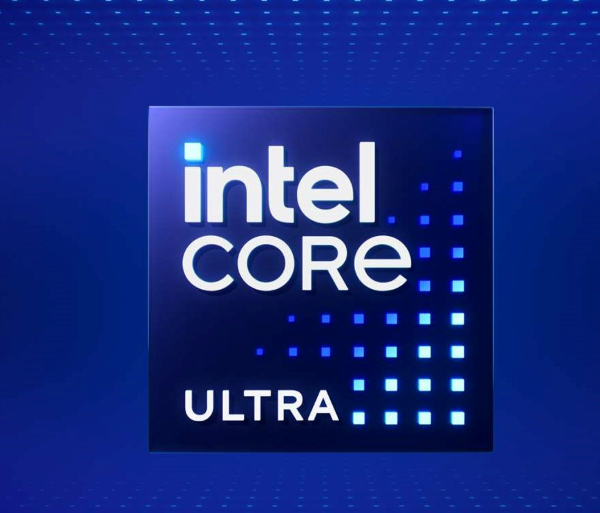Intel To ‘Usher Age Of AI PC’ With Core Ultra ‘Meteor Lake’ CPUs In December
Intel says the upcoming Core Ultra chips for laptops will provide a ‘balance of performance and power across AI-driven tasks’ by allowing apps to take advantage of their CPU, GPU and the new neural processing unit. ‘AI will fundamentally transform, reshape and restructure the PC experience,’ Intel CEO Pat Gelsinger says.

Intel said it will “usher in the age of the AI PC” with its long-hyped Meteor Lake processors, which will be released under the new Intel Core Ultra brand name for laptops this December.
At the third annual Intel Innovation event Tuesday, the chipmaker was expected to disclose a Dec. 14 launch date and said the new processors will feature, for the first time in an Intel design, an integrated neural processing unit that will enable “power-efficient AI acceleration and local inference on the PC.”
[Related: 4 Big Changes Coming To Next-Gen Intel CPUs]
“AI will fundamentally transform, reshape and restructure the PC experience–unleashing personal productivity and creativity through the power of the cloud and PC working together,” Intel CEO Pat Gelsinger said in a statement.
An Intel spokesperson told CRN that the company plans to release Core Ultra processors for laptops first and then scale the architecture for desktops “in the future.”
The upcoming Core Ultra CPUs are part of a growing wave of chips coming to personal computers with dedicated accelerators for AI and machine learning workloads.
Apple, for instance, has included a neural engine inside its Arm-compatible M-series system-on-chips for Macs since the M1 debuted in 2020. Meanwhile, AMD released for laptops earlier this year the Ryzen 7040 CPUs, which come with AI engines derived from its Xilinx acquisition. The latest versions of Qualcomm’s Arm-based Snapdragon laptop chips have also included AI engines.
Dell COO Jeff Clarke recently said he expects a “substantial” PC refresh opportunity coming for channel partners, in part because of new AI capabilities enabled by NPUs.
Core Ultra ‘An Inflection Point’ In Intel’s Road Map
Intel called Core Ultra an “inflection point” in its client processor road map due to four major factors.
It’s the company’s first client processor to use a chiplet design with Intel’s Foveros packaging technology.
While Intel has embraced the design methodology for its field-programmable gate arrays since 2016, the company debuted its first CPU and GPU chiplet designs with the launch of the fourth-generation Xeon Scalable and Intel Data Center GPU Max Series earlier this year.
Comprised of multiple smaller chips on a single package, the chiplet design is one significant way rival AMD has designed competitive server and client processors over the past several years to gain market share against Intel’s traditionally monolithic processor designs.
Another highlight of the Core Ultra lineup is the fact that it uses the Intel 4 manufacturing process, previously known as the company’s 7-nanometer node.
The Santa Clara, Calif.-based company announced last December that Intel 4 is “manufacturing-ready” after the node suffered a significant delay in 2020 due to defects that degraded production quality.
Gelsinger said at Tuesday’s event that the company remains on track with his plan to introduce five nodes in four years, with Intel 3 on track for the end of this year. The semiconductor veteran has previously said that following this plan will allow Intel to regain “performance leadership” over rivals by 2025.
In addition to using an NPU for the first time, the Core Ultra chips will also feature “discrete-level graphics performance” by using its Intel Arc GPU technology as the integrated graphics. Intel debuted discrete Arc graphics chips for laptops and desktops last year.
Core Ultra To Offer ‘Balance Of Performance And Power’ For AI
Intel said the Core Ultra processors will provide a “balance of performance and power across AI-driven tasks” thanks to their disaggregated architecture.
This means the company has designed to chips to take advantage of different AI workloads with its CPU, GPU and NPU depending on the type of computation required.
For instance, the CPU “has a fast response ideal for lightweight, single-inference low-latency AI tasks” while the NPU is a low-power AI engine best for “sustained AI and AI offload,” according to Intel.
On the other hand, the GPU’s performance parallelism and throughput makes it a good fit for “AI infused in the media, 3-D applications and the render pipeline,” the company added.
At Intel Innovation, the company was expected to highlight a collaboration with Taiwanese PC marker Acer to show a Core Ultra-powered laptop with an “array of new AI PC use cases.”
In a statement provided by Intel, Acer COO Jerry Kao said the OEM co-developed with Intel a “suite of Acer AI applications” that take advantage of Core Ultra’s AI acceleration capabilities. He added that Acer used Intel’s OpenVINO toolkit in addition to AI libraries developed by the two companies to “bring the hardware to life.”
Intel launched OpenVINO in 2018 as a way to optimize deep learning models to run on various processors. On Tuesday, the company unveiled new capabilities for OpenVINO, including the ability to optimize generative AI models such as Llama 2 across an array of processors.
Many Core Ultra Details Remain Unknown
Intel did not provide several key details for the Core Ultra processors, such as the specifications, the list of models or the pricing for volume purchases by channel partners.
While Intel did not disclose details for specific models in the Core Ultra lineup, the company previously said the new brand will include an Intel Core Ultra 5, an Intel Core Ultra 7 and an Intel Core Ultra 9.
This new naming scheme, announced in June, will mark a departure from the way Intel has named Core processors since the last major rebrand in 2008.
Before Core Ultra, Intel Core CPUs carried an “i” in front of the tier number and an alphanumeric string in back, such as Intel Core i7-1260P. Moving forward, the alphanumeric string will come after the word “processor” in names for individual CPUs.